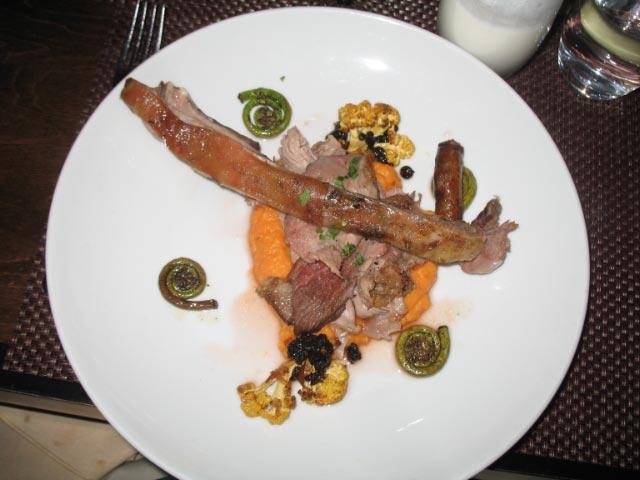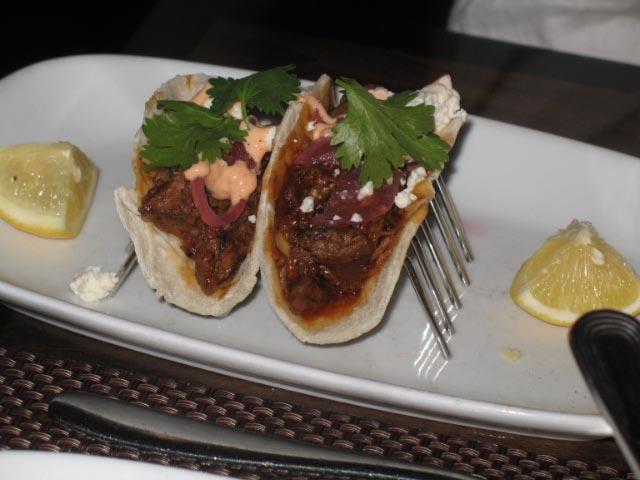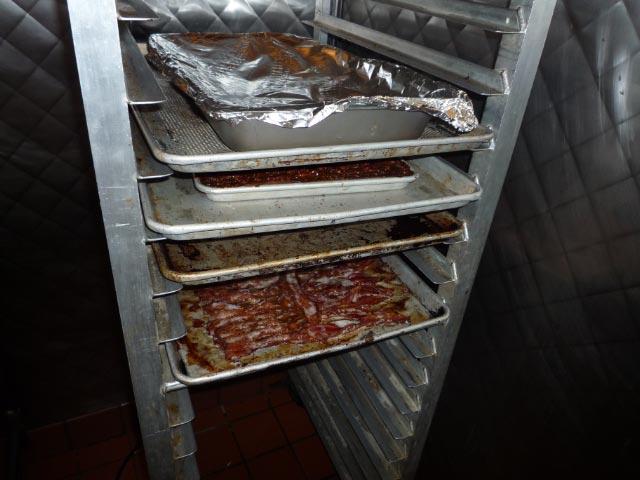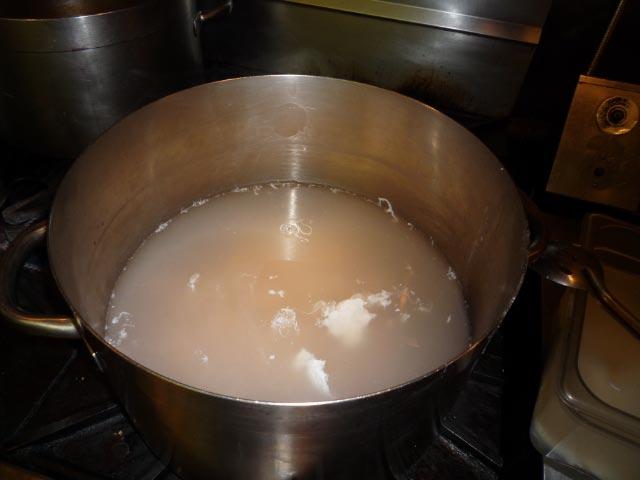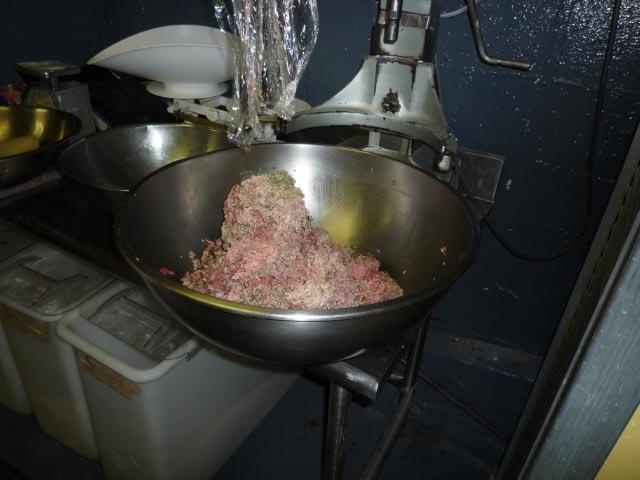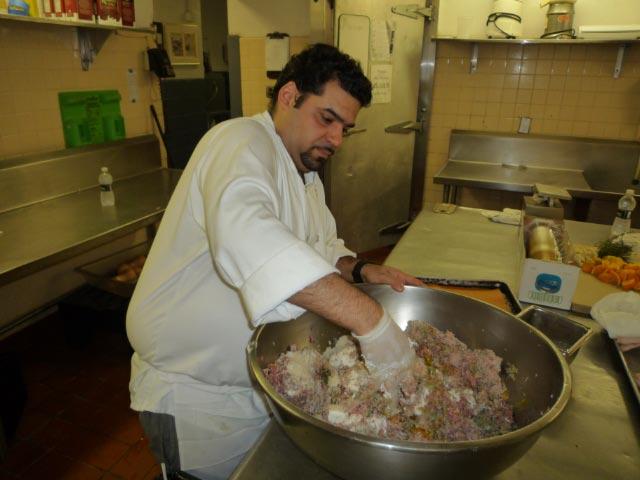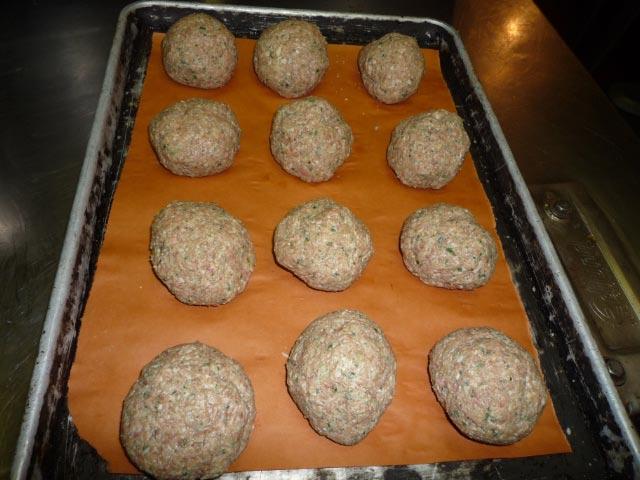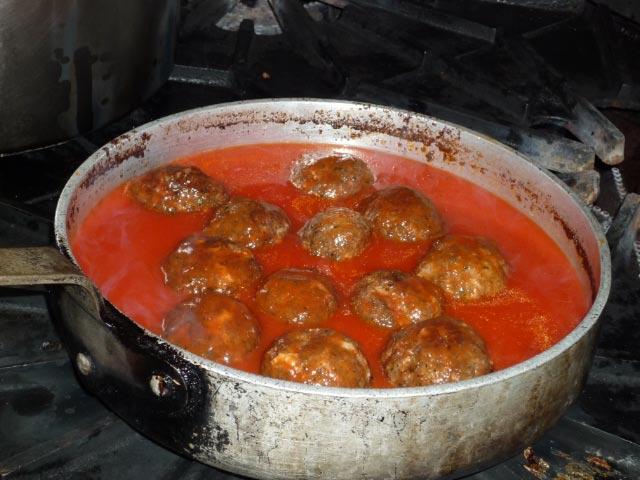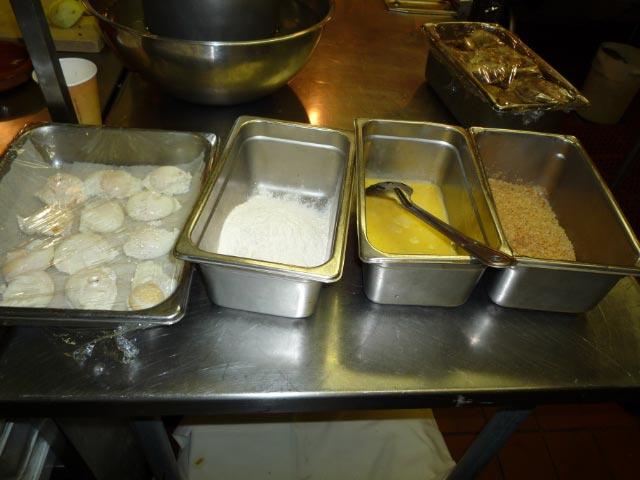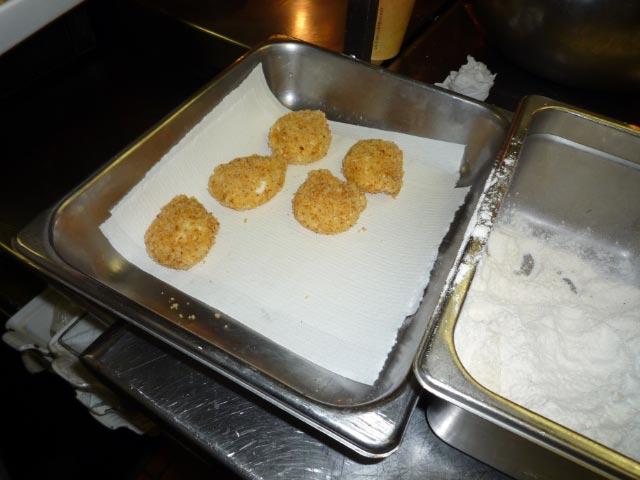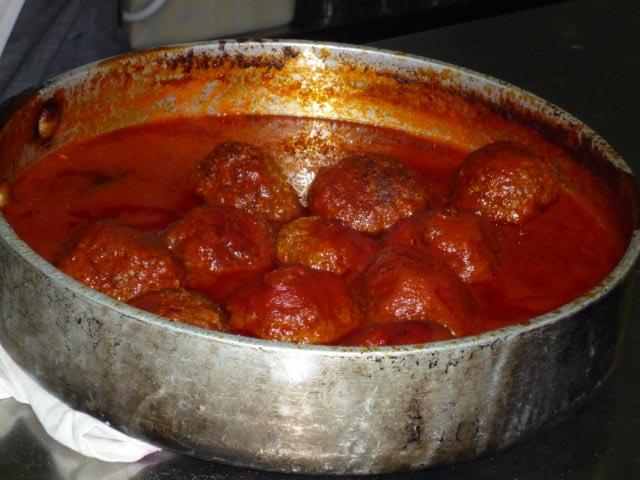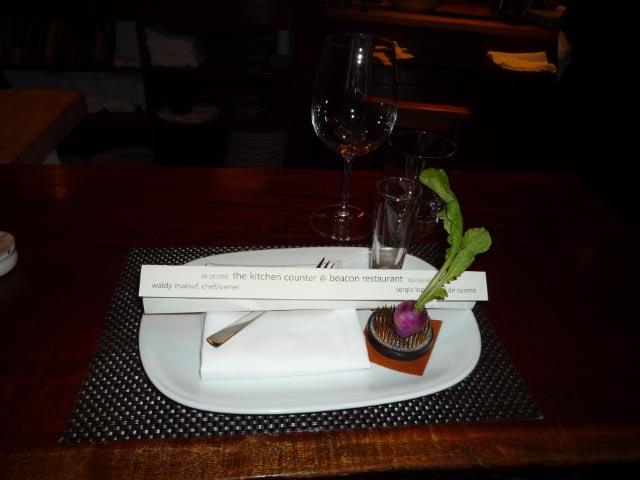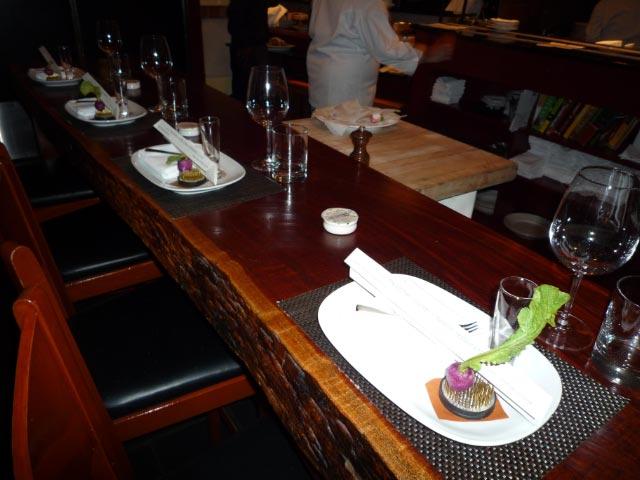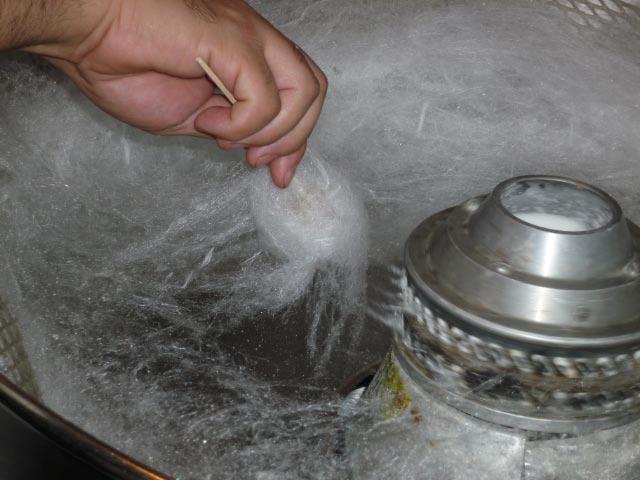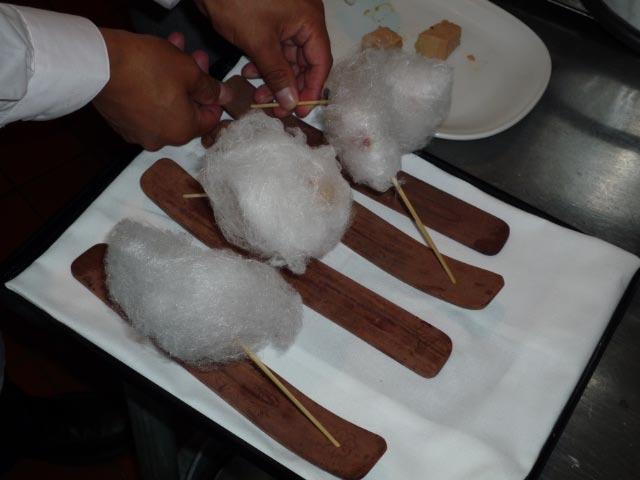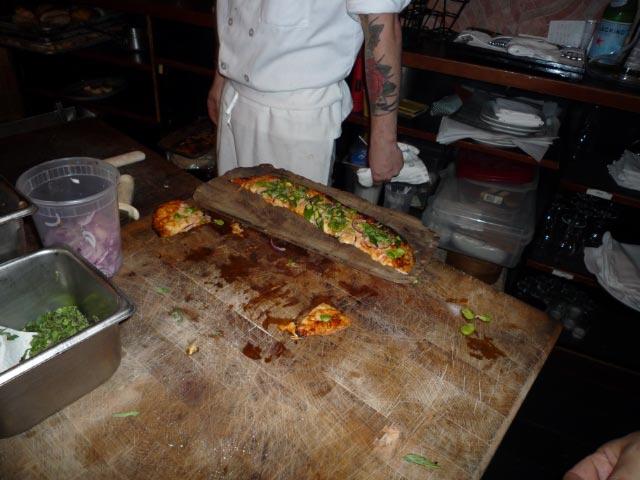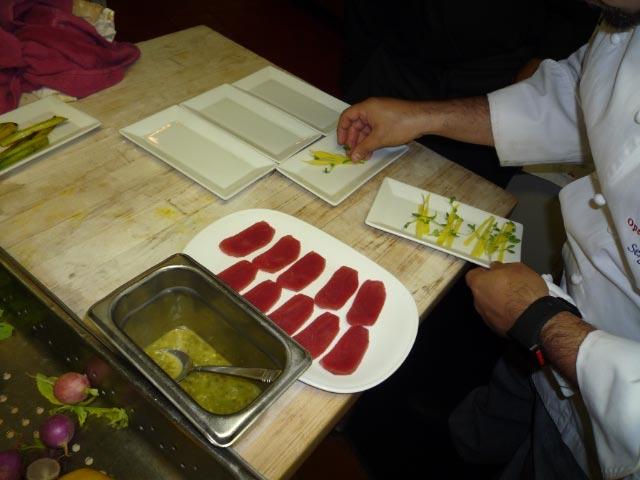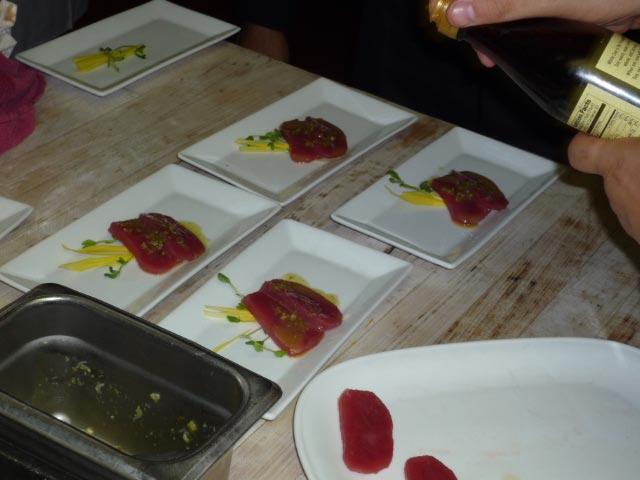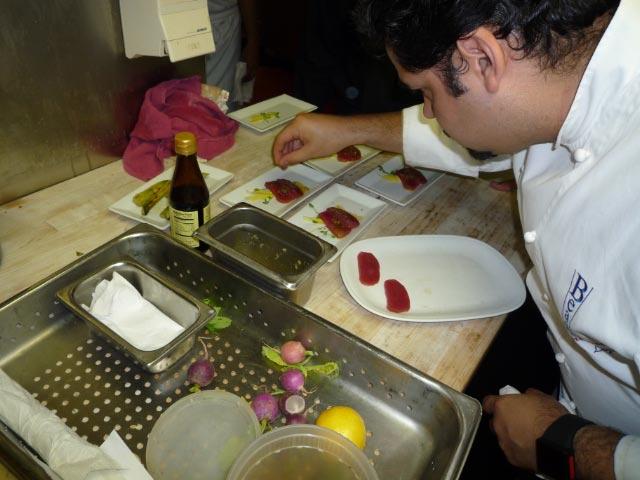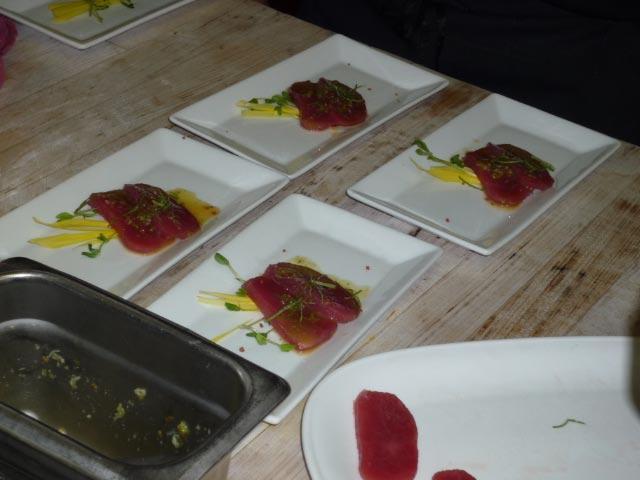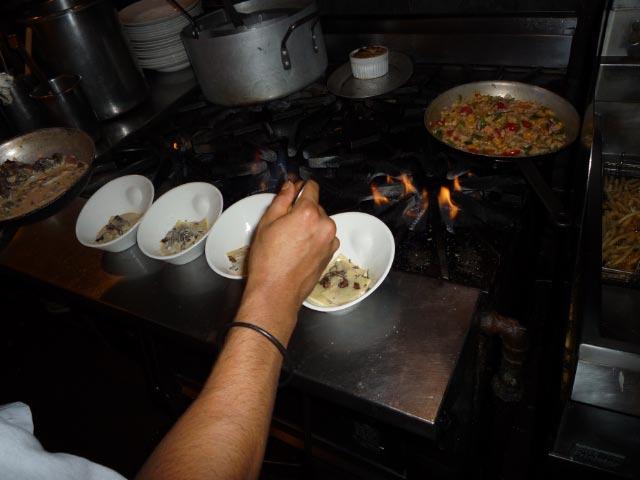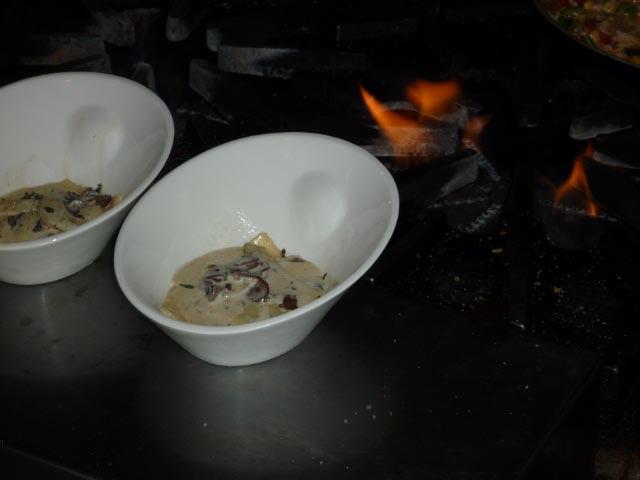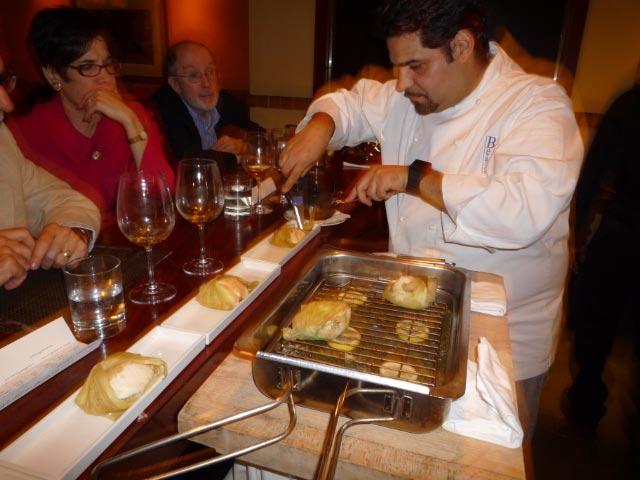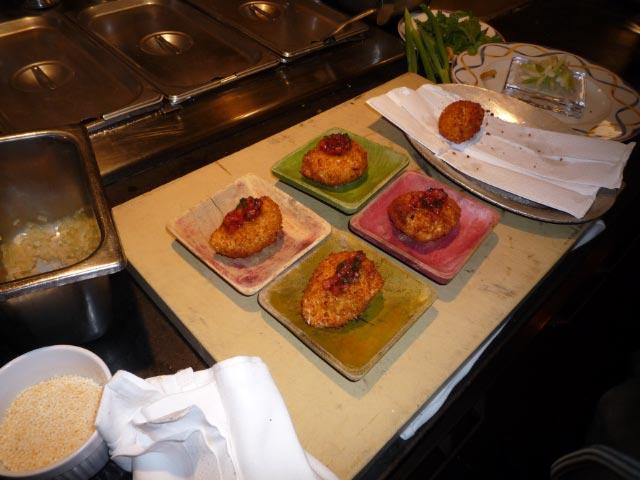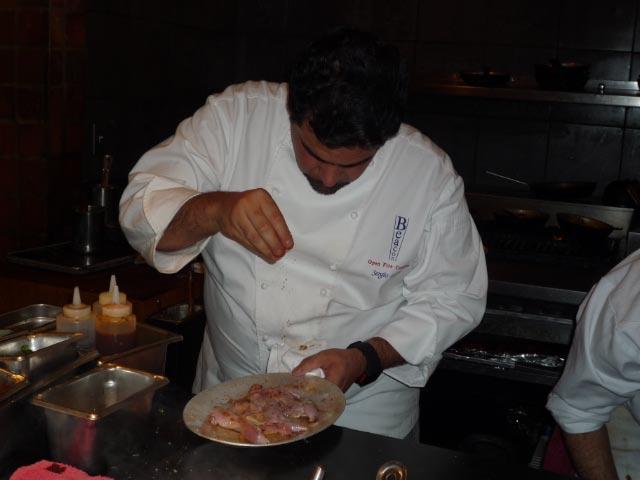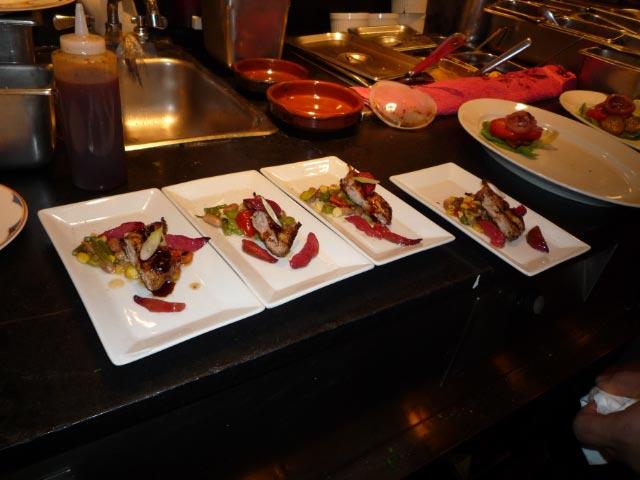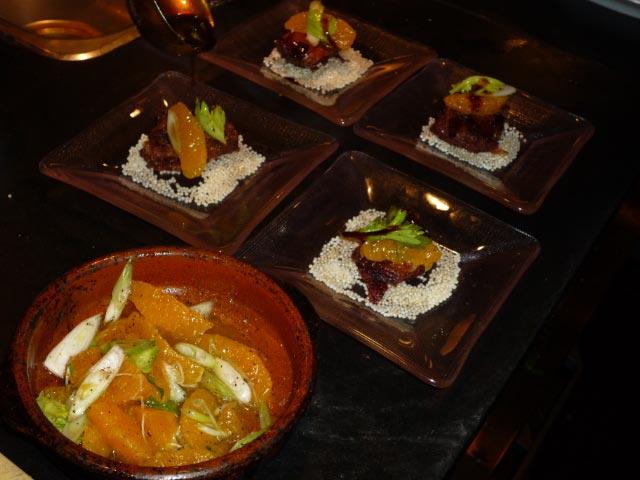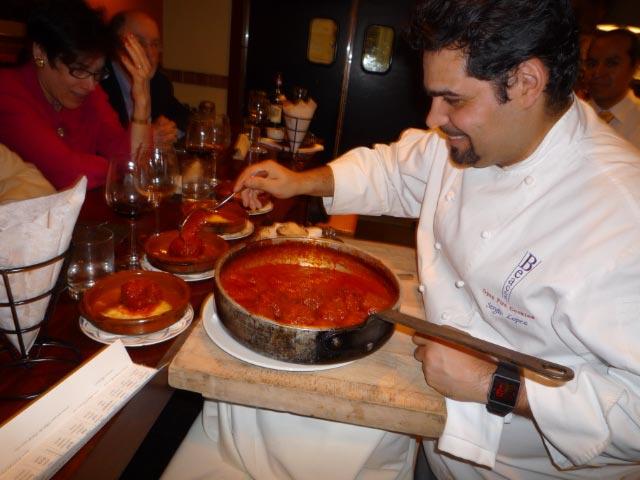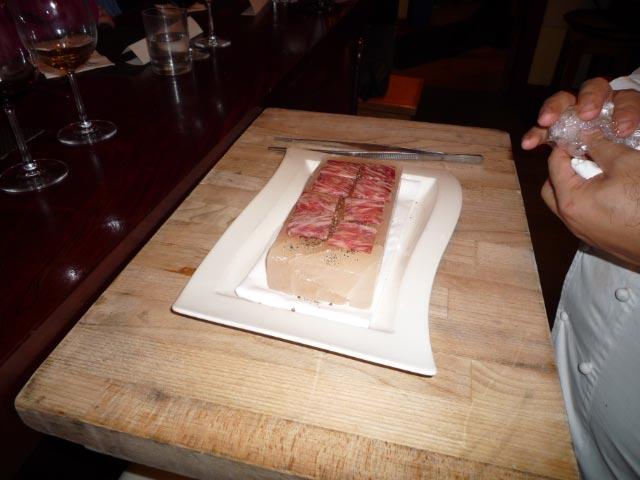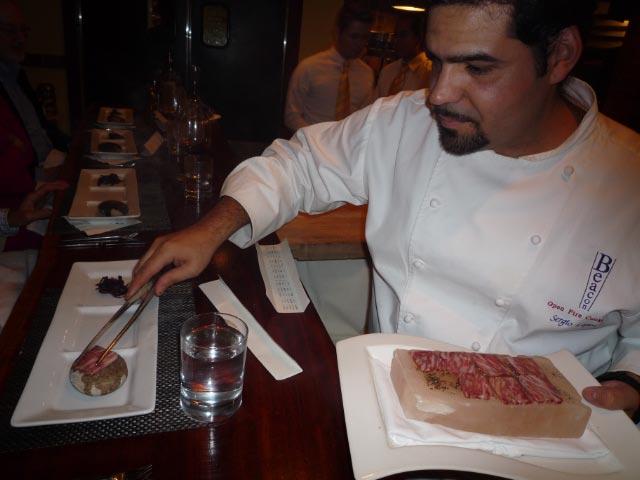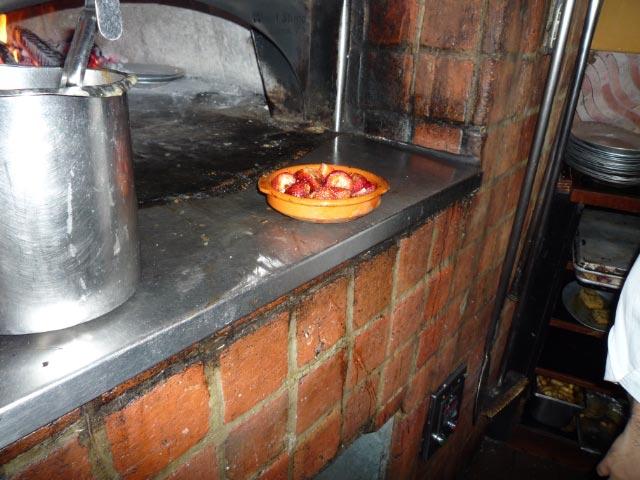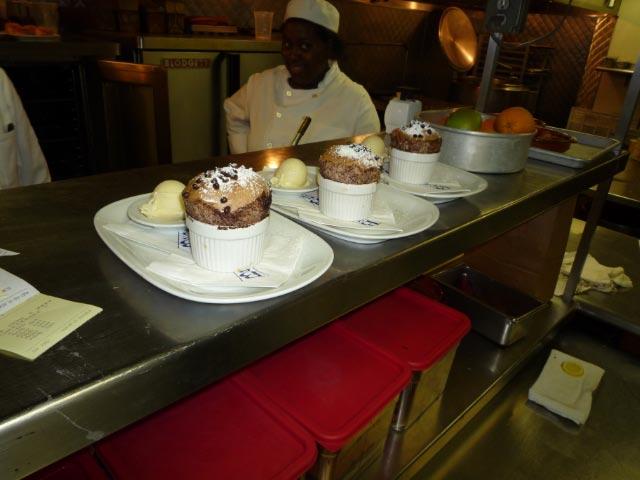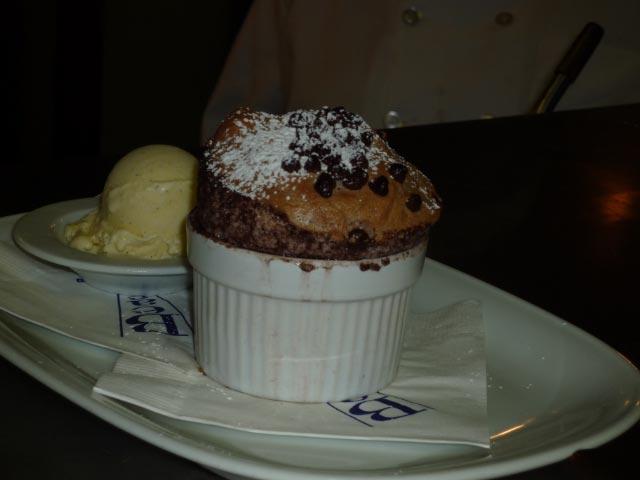-
Posts
28,458 -
Joined
-
Last visited
Content Type
Profiles
Forums
Store
Help Articles
Everything posted by Fat Guy
-
We spent July 3 at my friend Larry's place in New Jersey. He has a grill, which is normal for normal people but not common in Manhattan where I live. So grilling is always a treat for us. We were 8 people with a variety of preferences. We grilled chicken, hamburgers, and steaks. The steaks were assorted cuts I got earlier this week at the launch event for Emeril's new steak line. They were quite good. We also grilled asparagus, boiled corn on the cob, and made a mozzarella-and-tomato salad. Ben & Jerry's was on sale at the local King's so we got a whole bunch of different flavors for dessert. And a whole watermelon, of course.
-
We never did make it to Sonic today. I tried to convince my son to go. I explained to him that they bring the food right to the car ("PJ, now we're going to go to the greatest restaurant in all of New Jersey. They bring the food to you in your car.") and he was like, "So what?" He chose to stay inside and play my friend Larry's bass guitar. Maybe next time.
-
The one time I went to a Sonic, in Kansas City, I only had a beverage. It was across the parking lot from my motel, and I was thirsty. I must say, judging only on beverages, Sonic did a better job than any chain I've been to. Not only is the selection of soft drinks pretty amazing, but also they have really good ice. So I'll be interested to try the food, which seems less promising.
-
It turns out there's a Sonic right near our friends in New Jersey and we're visiting them tomorrow. Any tips on what to order on what may be my one Sonic experience for the next decade?
-
Mosey's is the brand I see around a lot in New York City. By the way, the terminology for retail corned beef seems to be "ready-to-cook" (a big piece of corned beef that still needs to be cooked) versus "ready-to-eat" (sliced deli meat).
-
Two points of clarification, because there seems to be some repetition on these points and they're not correct: 1. The Ozersky column appeared on the website of Time magazine (Time.com) not the Times (as in New York Times). Discussion of the Times on this topic is occurring for two reasons: the Times published a print article and blog entries on this issue, and the Times has a very stringent ethics policy that's published for all to see. 2. I'm not aware of anybody "using the fact that it is a blog as a defense." In my own post above, I did point out that blogs tend to be more autobiographical than traditional print journalism. I'm not sure anyone would argue otherwise.
-
I'm surprised that, as far as I can tell, Time doesn't have a code of ethics published online. Has anyone else had success finding one?
-
Even non-serious, non-news organizations are likely to find the story problematic, not least on account of the lack of disclosure. Beyond that failing, though, one has to bear in mind that it's a blog. It's a Time.com blog, but still fundamentally a blog and not a magazine column (throughout the discussion here and elsewhere I think there has been some confusion on this point). Blogs by their nature tend to have heavy doses of autobiography. I think the supervisor of blogs at most publications would say yes, go ahead and blog about the food at your wedding. It's just that this particular approach was quite flawed.
-
I think there are a lot of meaningful distinctions to draw among free things. In international diplomacy, for example, where gift-giving is part of some cultures, the typical approach is to put a cap on the size of the gift that a diplomat is allowed to accept. In politics, there are limits on the amount of money that can be spent on a free meal by a lobbyist. Someone out there thinks there are distinctions to be drawn. I certainly think there's a difference between a free glass of wine and a free bottle of Petrus. But also I think there's a difference between comps and gifts. It's just that when you give a gift to someone who's normally the recipient of comps, things get blurry.
-
Two thoughts here: First, there's a distinction between an ethical lapse and an indefensible position. Half of what I read in mainstream opinion journalism is chock full of positions I think are outright wrong, but that's not unethical. So for me the disclosure issue is the only one that rises to the level of non-standard. Second, I'm not fully convinced that the whole thing wasn't tongue-in-cheek. I mean, if you look at the language: You have to at least hope he's just ranting and not purporting to give real, service-oriented advice.
-
Morimoto's signature tuna pizza with anchovy aioli uses flour tortillas as the base.
-
Gifts are not income. Neither are business-related comps like theater tickets for theater critics, sports tickets for sports writers, hotel stays for travel writers, etc. But ultimately this particular episode isn't really about comps. Josh is legitimately friends with a lot of chefs. I remember when my wife Ellen was working on the Michael Psilakis book, she told me he was always going out to eat with Josh. I know just from being out and seeing who he's hanging out with that he's close personal friends with a lot of chefs. The guy from La Freida was his best man -- that's not something you just pick a random media contact for. The two main issues, as I see it, are 1-disclosure, and 2-relationships with sources. No question, Josh should have disclosed more details about the circumstances of the event. And the whole thrust of the article was ill-conceived, especially when placed under a boneheaded headline that Josh probably didn't have anything to do with. I think he'd be the first to agree with all that. So I think the second issue is more interesting in this case. It has actually caused me to do some introspection, because I like the overwhelming majority of food writers I know (pretty much everybody except a few people at the New York Times) have over the years become friendly with plenty of people in the industry. I don't imagine that all the people I'm friendly with are my close personal friends, but a few are. And like many people in the modern media world I have to play many roles in order to generate different revenue streams not to mention keep myself interested: I have my eGullet position, I write freelance, I write books, I teach, I do speaking engagements, I occasionally participate in broadcast media, I consult. At first when I heard about Josh's wedding I thought maybe it was unusual. But then I started thinking about the last ten book-release parties I've been to for food books. Generally there's a restaurant hosting the event for free, and one or more chefs providing food. I've had two such book-launch parties, and I'm a minor player in the book world. And I started thinking about all sorts of hybrid situations, like when Waldy Malouf let me use Beacon one afternoon for a video shoot or when Gita McCutcheon (a food publicist who has become almost like family to me over the years) offers me career advice (and I was at her wedding etc.). I think there's a lot of pressure to keep that stuff secret, because in terms of public perception the tail of the New York Times ethical standards wags the dog of the food-journalism business even though most food writers don't have full-time jobs at companies that can afford to reimburse for everything and that impose the kinds of ethical standards (anonymity, etc.) that a lot of people mistakenly associate with all culinary journalism. The cloistered approach of the Times may have its place as a tool of consumer advocacy, but most of the food journalists out there -- especially in contemporary mixed-media environments -- are at least partially embedded with their sources both professionally and socially. No amount of railing against that will change it. The only workable response is a disclosure requirement, which allows readers to judge for themselves whether they should discount a report based on an underlying comp or relationship. This whole episode, however, makes me feel a little sad. Josh got married. It's a beautiful thing for him, and for his bride. It's unfortunate that such a wonderful day has to be associated with the sort of negativity that is going to persist around this issue for some time. At the very least, I hope as this discussion goes on we can all treat the issue respectfully as the complex issue that it is. In the wider world of journalism, there have of late been two things that might bear on this discussion. David Brooks offered a good summaryin the Opinionator blog today: Food for thought.
-
On the one hand I guess that's a factually correct distinction: the AOC-type rules tend to apply to products not restaurant dishes. On the other hand the cultural distinction is still valid: European cuisine, especially traditional cuisine, is far more regimented than American. One thing I noticed last time I took a barbecue road trip was that on menus the so-called outliers generally outnumbered the dishes I thought of as traditional regional ones. Even in the back woods of North Carolina I saw a lot of chicken and it was invariably described as "BBQ chicken." A totally unsentimental menu analysis, even with the sample set limited to the places with the best reputations, would likely lead to the conclusion that North Carolina barbecue includes chicken. And if you go to Memphis the ratio just falls off the cliff. To get around that I think we have to start by imagining that America is more European than it really is.
-
I agree that barbecue is as worthy as any of the world's regional cuisines, but I think it may be a category error to try to classify barbecue along the lines of an AOC-type system. Those systems of classification are regulatory in nature: there's an imposed, quasi-governmental set of rules that says you can't call it X unless you grow Y and do Z with it. The industry and the regulations have been locked in a European embrace for centuries, and nothing like it could possibly work here. The most that can be done in America is passive, observational taxonomy. That's necessarily going to be an order of magnitude less precise than an imposed, regulatory system. If a quasi-governmental regulatory body in North Carolina said, "You can't call it barbecue in Eastern North Carolina, starting at such-and-such river and ten paces to the east of the silo behind farmer Brown's barn, unless it's whole hog chopped with vinegar and red pepper flakes, and you have to label all other barbecue-like food 'barely fit for human consumption,'" then all of a sudden it will become a lot easier to talk about barbecue in AOC-type terms. But that sort of regulatory scheme would be so un-American that to attempt it would cause a barbecue revolt that would make the Tea Parties look like tea parties. After all, if you go into most barbecue places anywhere there are a couple of dozen items on the menu. One or two of them might reflect something like a true regional style. The rest are chicken and ribs. So all a taxonomy is going to indicate is the center of gravity of what the food culture defines as a region's best products. And outliers here are the norm, so you'll drive around North Carolina but stumble across a place that does brisket, and that's not surprising. I guess in Europe you have some producers opting out of the definitions, like the producers of the Super Tuscans, but that sort of behavior is a curiosity over there and a foundation of the culture here.
-
For most of what I do in the blender (I have a Blendtec as well) it's not so much a question of having a recipe as it is of achieving the right balance of liquid and solid, frozen and unfrozen, etc. So it's more about ratios and technique. I mean, I suppose it would be possible to follow a smoothie recipe that says X ounces of strawberries, Y ounces of banana, and Z ounces of ice cubes. But what I really need to know is how much ice to add for a given amount of fruit, because on any given day my supply of available fruit (not to mention what I feel like having) can vary so much. I've learned to eyeball it but it would be nice to know and understand the most workable ratios.
-
I don't know about ever, but in terms of pastry chefs whose desserts I've been able to sample directly I've been most impressed with Philippe Conticini. The man has so much raw, effortless brilliance and every one of his creations that I've sampled has made me think.
-
It may also make sense to think of sausage aka hot links as an ingredient, like beef or pork. Under this theory we'd say that beef isn't always barbecue, and neither is sausage. It becomes barbecue when you finish it in the pit. That's how I had Elgin hot links served to me when the Elgin guys came to New York City: they brought sausage with them and finished them in the pit for service. Perhaps that's what made them barbecue sausage and not just sausage. I think it's up to the Texas barbecue subculture to define what is and isn't Texas barbecue but I can provide an outsider's perspective: I very much think of Elgin sausage as a representative of Texas barbecue, and I think of Elgin as one of the epicenters of Texas barbecue on account of that sausage.
-
For a while now Pera has been offering a "Weekend Mediterranean Marketplace" menu. Whether it is accurately named or not, it's very good (just like the restaurant, which also may not be accurately named). The menu includes a variety of options (you can see it here) but the main attraction is the whole roast lamb. No, they don't give you an actual whole roast lamb. They give you a portion. And if you look in the kitchen, you can see they're roasting whole lambs. For $29 per person you get family-style service of three appetizers -- warm hummus with lamb bacon, roasted whipped eggplant, and Mediterranean peasant salad -- and individually plated portions of roast lamb with whipped sweet potatoes, sauteed fiddleheads, grilled lamb sausage, and oven-roasted cauliflower. The appetizers: The lamb: As we were guests of the restaurant, the kitchen couldn't resist also sending us some other plates, one of which stole the show. "Turkish smoked lamb tacos" are surely some of the best bites of food being served in town right now. Whether you're a lamb lover or not, you'll be amazed how well lamb performs in this dish. (By contrast, only a lamb lover will love the whole roast lamb -- it's hardcore.) Over the past few months, I've been recommending Pera to more and more people. It's an excellent restaurant in an area of town where good dining options are less than plentiful. I always get good feedback from people who eat there. I can't pretend to be an expert on marketing, but for the ecumenical, food-loving set I run with I think the restaurant would be more appealing if it embraced its Turkish identity more fully. The whole strategy of calling things Mediterranean instead of Turkish ("Pera Mediterranean Brasserie," "Weekend Mediterranean Marketplace") and using a number of Anglicized menu descriptions ("crispy phyllo rolls" for boreks) makes the restaurant, on paper, sound generic. Yet on several dishes, no other Turkish restaurant in town can touch Pera.
-
I think a lot of folks would say that, in the context of Texas barbecue, sausage is barbecue. Walsh, for example, refers to "Texas barbecue sausage" on page 252. I think there's a good argument that says Elgin makes the list.
-
Last night I participated in the preparation of another Kitchen Counter dinner, again as part a charity-auction offering. This time I was better prepared. I visited the restaurant the day before to meet with chef de cuisine Sergio Lopez. We decided that I would come in between 2 and 3, poach and bread the eggs for the crispy-egg dish, grind and season the lamb for the lamb meatballs, and then assist Sergio with various prep tasks on the other 8 savory dishes from the evening's 12-course menu (2 courses were to be desserts so Sergio and I were only responsible for 10). Normally, if I say I'll be somewhere between 2 and 3, I arrive at 1:50. But my fear of an extra hour of kitchen labor trumped my compulsive on-timeness, so I entered the restaurant at 2:59. In order to slow myself down, as I was walking across Central Park South on the way to Beacon, I stopped by the horse-drawn carriages, called my almost-5-year-old son, and described the different horses to him. Upon arrival at the restaurant, I found Sergio in the basement and took as much time as possible selecting and donning chef's coat and apron. Then it was time to poach the eggs. When my father was a Boy Scout leader, he figured out a strategy for earning the respect of his troop: he learned to do one thing really, really well. In his case it was starting a fire with a twig and a rock. He would make sure, on any trip, to perform that feat first thing. Once he did it, everyone respected him and it didn't matter that he wasn't up-to-par on many of the other expected skills. That's how I am with poaching eggs. When chefs and serious food people come over to my place, I try to find an excuse to poach them an egg. Almost invariably, I get it just right. I have friends in the food world who are still talking years later about how preternatural my egg-poaching abilities are. So I figured, right off the bat, I'd poach some eggs and earn the respect of the Beacon kitchen brigade. Things went downhill from there. When it mattered most, I experienced my first-ever episode of egg-poaching impotence. The first egg I attempted to crack shattered into a disastrous mess of shell, yolk, and albumen. On the next one, the white tore away from its yolk as the egg hit the water. The job was to poach five eggs: four for the dinner guests and one for backup. Two dozen eggs later, staring despondently at a stockpot full of egg-drop soup, I didn't have a single acceptable poached egg to my name. I couldn't poach an egg to save my life. No amount of meditation and visualization could save those eggs. Thoroughly humiliated, I reported to Sergio, "This just isn't going to work." He was kind: "Eggs can be tough. Let's start over and take it step by step. We've got plenty of eggs. Just relax and we'll make it right." We put on another pot of water, added vinegar, let it come to the boil, and turned the heat down a bit. Sergio got the water moving with a slotted spoon and gently cracked four eggs into the pot. Three minutes later, four flawlessly poached eggs emerged. He cracked in another four and told me to take them out when they finished cooking. I got three out and broke the fourth. I then cracked four eggs and managed to poach them without incident, though nobody was watching. So we had 11 poached eggs chilling and firming up in ice water. Sergio went to change his clothes. The disposal of the failed poached eggs had backed up the drain and splattered Sergio's chef pants. He took it in stride. After drying the eggs and chilling them for a bit, we set up a station with flour, beaten egg, and bread crumbs (house made, toasted with garlic and butter and ground very fine in the Robot Coupe). Sergio said, "Let me do the first five." He dusted each poached egg gently in flour, then dipped it in the beaten eggs, then rolled it in bread crumbs. Then I had the other six eggs to experiment with. I breaded five of them without incident, and was very proud of myself, but I put a thumb right through the sixth one. Worse, it leaked all over three others. My preparation of the lamb meatballs was slightly less humiliating, though still plenty pathetic. Sergio, by then thoroughly disgusted with me and extra busy picking up my slack, turned me over to Manny the butcher. Manny set me up at a station in the basement with a big bowl of lamb shoulder meat, herbs, onions, garlic, and big Hobart grinder (actually a mixer with the grinding attachment affixed). My job was to alternate feeding the meat and flavorings through the grinder. After putting a couple of pieces of meat through the grinder I fed in a bunch of herbs. Half of the leaves didn't make it into the feed tube and fell directly into the bowl of ground meat. I reached in to pick them out and right away a clump of bloody meat coming out of the grinder fell on my sleeve. About half an hour later my arms felt as though they would come out of their sockets and my neck was profoundly stiff (the feed tube for the grinder was at the level of the top of my head). Manny walked by and asked, "Is it done?" I was maybe half done. I said, "Almost." He looked at what was done and what was left and uncomfortably said, "Just get me when it's done, okay?" with the emphasis on "okay" implying, "Say 'yes' if you understand simple English commands." (Manny, whose name is probably Manuel and who is not a native English speaker, was puzzled by my apparent mental feebleness.) After an hour of grinding, I brought the finished product to Manny and Sergio for inspection. Sergio told me to add pepper, salt, eggs, cumin and some other stuff, put on latex gloves, and mix everything in by hand. After I did everything, Sergio tasted a little bit, shook his head, re-seasoned and re-mixed. Then Sergio walked away, Manny tasted a little bit, shook his head, re-seasoned and re-mixed. Manny then set up a scale and said we needed to make 4-ounce meatballs. He pinched a wad of the meat and threw it on the scale. Exactly 4 ounces. He rolled it into a ball, put it on a tray and grabbed another portion. Exactly 4 ounces. It was my turn. My first attempt was about 7 ounces. I took bits off and, after about 9 adjustments, had the needle pretty close to 4 ounces. I made a ball and put it on the tray, then Manny picked it up and re-rolled it. I filled the tray -- it held 12 -- and brought it upstairs. This took me about 20 minutes. About 20 minutes later, Manny came up with a huge sheet pan full of meatballs -- he had manufactured the rest of the batch. We then pan-fried the meatballs and put them with tomato juice in the wood-burning oven for a good long time. I proceeded to embarrass myself in creative ways: destroying perfectly good oranges in order to extract six presentable segments, cutting some sushi-style slices of tuna that looked like they'd been chewed off, etc. It was awful. Luckily, Sergio and the team salvaged all my errors. (And I got to eat the mistakes.) Our guests for the evening were kosher-style diners, so we weren't serving pork, shellfish, and other forbidden creatures, and we weren't combining meat and dairy in any single dish. This required very little modification of recipes -- it was mostly just a question of selecting dishes from Waldy and Sergio's repertoire that were up to code. Meanwhile, as I was working in the prep kitchen, I was standing next to a sheet pan of bacon on a speed rack: It called and called to me, but I kept thinking it would be unethical to eat the bacon and then handle the food of our guests. I figured what I'd do is wait until all the prep was done, sneak a few pieces of bacon, wash my hands, and then go into service. But when prep was finally over, the bacon was gone from the rack. Someone had taken it out to the service kitchen. I went without. It was time to serve dinner. Upon arrival, the four guests were seated at the counter up in the bar area. We were going to serve them kir royales with their canapes but they were serious wine collectors and brought a '90 Trimbach riesling. (And, for later, a '96 Lafite; yes I got to taste.) We glazed cubes of foie gras with a grapefruit syrup and ran them through the cotton-candy machine. Course 1, foie gras with spun sugar. At the kitchen counter we had waiting a crudite of breakfast radishes with seasoned butter for dipping. Course 2 was a wood-oven pizza with fava beans, asparagus and onion. Each guest was served a small slice on a cool-looking miniature wooden paddle. That used less than half the pie. I got the other half. Course 3: crudo of tuna with white soy, served over corn and pea shoots Course 4: wild-mushroom ravioletti. Course 5: hot-smoked cod with fennel. Course 6: crispy poached egg with pickled watermelon rind Course 7: grilled quail with roasted plums. Course 8: duck confit with orange and herbs. Course 9: lamb meatballs with polenta. Course 10: kobe beef cooked on hot stones. Course 11 I didn't get a photo of. Coconut sorbet with what I can only describe as a Cubano version of a macaroon (Sergio's family recipe) served with strawberries dressed with balsamic syrup and roasted in the wood oven. I got a photo, at least, of the strawberries right before they went into the oven. Course 12: Chocolate-chip souffle with smoked-vanilla ice cream.
-
The product is called "Dawn Pure Essentials." It's clear, though not totally unscented. I think it's more like lightly scented with citrus. It's good stuff, though, and has the advantage of being available in normal stores.
-
Costco *is* a wholesaler, and a big one. When producers sell into Costco they do it at amazingly low prices because the volume is so high. I don't know the specifics of the salmon Costco is selling but my experience with Costco in general makes me not surprised to hear about yet another good product being sold at something like half the going rate.
-
Dinosaur Bar-B-Que, which originates in Syracuse but has a branch in Harlem, serves salt potatoes. I've had them a few times. They're tasty.
-
North Carolina barbecue is definitely an acquired taste. I've never really acquired the taste for the Lexington style, where they process pork shoulders to a cat-food-like texture and add vinegar and ketchup (although, there's a post somewhere here from when I visited several rural Western places with Dean McCord and they didn't go so fine -- much better). I vastly prefer the Eastern style where they use the whole hog -- there it makes sense to chop it up because you get all different cuts of meat mixed together. I prefer a rougher chop than most North Carolina places default to, though. At most restaurant down there you can just ask for rough chop. With Mitchell's at the BABBP, where you can't customize as much as at a retail location, I've found that the way to go is to get extra cracklin's and mix them in for texture. But yes, I'd like to see a rougher chop statewide. (The fish pants are a little bit of an albatross for me. People expect them. I can't change to another design because I get complaints. When Chefworks stopped making them I wore regular tan pants for a while and people on the street -- people I'd never spoken to before -- would stop me and be like, "Dude, where's the fish pants?" So I found an alternate supplier and am now again wearing them daily.)
-
One thing I can say for sure is that the Vita-Mix and Blendtec have very different blade designs. The Vita-Mix has a four-blade design and the blades are very sharp. The Blendtec has a single blade kind of like the rotor on a helicopter, and it's not sharpened -- it just does its work by blunt-force trauma. Both the Vita-Mix wet blade and the Blendtec blade pull food down through the blade, but the Blendtec blade seems to do a better job of it. I've read one comparison that said the Vita-Mix dry container does a better job with grinding grain than the Blendtec all-purpose container -- better job being defined as a finer grind. I don't know. I haven't explored that area.




